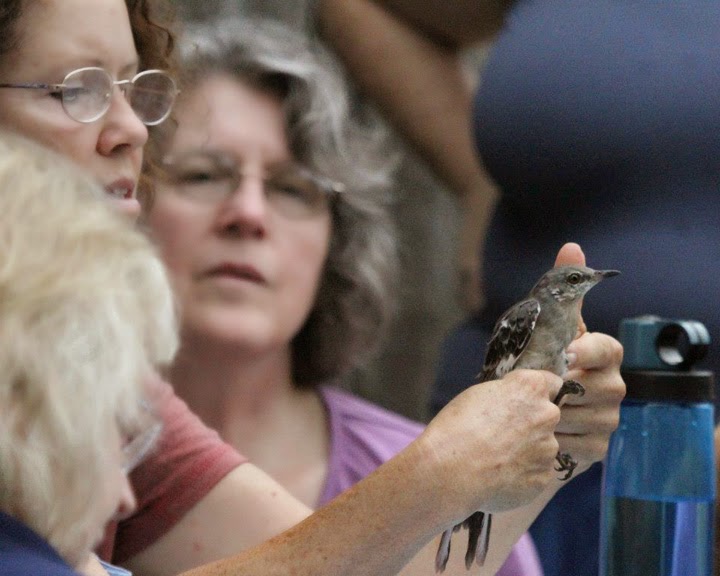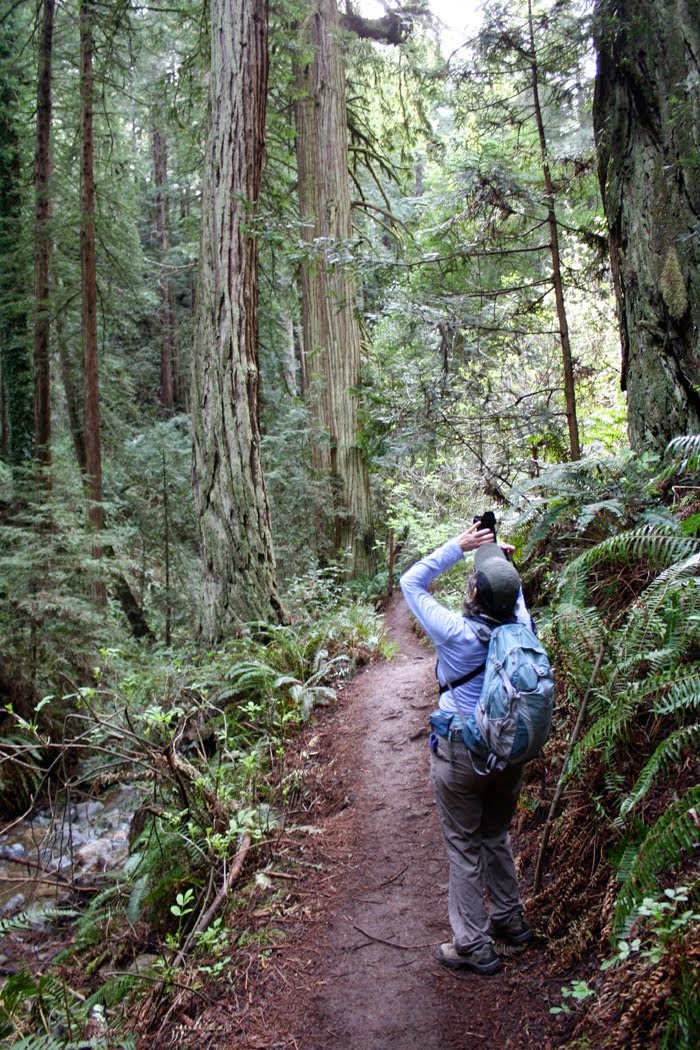Purple martins are secondary cavity nesters, birds that rely on other birds to make the cavity for their nests. But in the course of history, both natural nesting cavities diminished and humans began furnishing nesting cavities. Just how long ago humans began providing cavities is not certain, but some believe that Native Americans began this tradition. People loved the birds, and the birds learned that fewer predators were found around humans. Martins in the eastern United States now rely exclusively on human furnished cavities for nesting.
These clusters of white gourd-shaped cavities that dot our rural landscapes, are now as much a part of the purple martin ecology, as the flying insects they capture on the wing.In the above image, you see both the under-painting of rose and gold that I've initially applied to the martin and the additional colors I'm adding as I apply glazes. The martin's color will change with each application of thin veils of color. My eyes see blackish wings with a bluer sheen on the body feathers. To create this distinction in color, I add burnt sienna to French ultramarine, giving the wings a more neutral and darker hue than the body. While applying additional glazes to one area of the bird at a time, I let my eye lead me. My goal is a darker martin with color showing through giving the impression of light reflecting off the feathers.
In order to make the background trees recede, I darken them with several more glazes of French ultramarine. Below, I have added sketched detail to the martin gourds and the background trees.
These are the marks that guide my negative painting, the painting of the space between and under the trees, giving more shadow and depth.
Leaving the painting for a while to allow the paint to dry, I returned to discover that my tree trunks looked rather puny. They are behind the martin housing pole, but they should not appear so slender as they are depicted in the above image. It's one of those moments when you say, "good grief". But, these corrections happen all the time. When you are painting, you are close to the work and proportions have a different appearance. Stepping back and stepping away are both a very important part of checking the overall appearance of what's happening on the paper. Perspective changes when you are taking in a larger, more distant view. Below, I begin to correct these shapes by lightly lifting color with my scrub brush, expanding and varying the trunk shapes.
Below you see how the trunks appear after adding some color and shading. I have added depth and variation to the tree tops in the same way. Additionally, separate glazes of rose and gold, give the impression of the sun's glow on the horizon. I've added a hint of these colors to the white gourds and the wing tip, as well.
Below, I begin to play with the dragonfly. I love color and adding the orange (burnt sienna and quinacrodone gold) was a special moment of fun. Orange and blue are opposites on the color wheel, and you can see how the two colors sparkle when placed next to each other. I don't leave the colors this bright, both for realistic reasons and because I don't want the dragonfly to compete with the martin. It is included as a dynamic part of the subject, giving the viewer information about the bird and its behavior.
The finishing work included the addition of more glazes and color to darken the martin and add shadow. For this you get to use your imagination! I got so focused on the painting toward the end, that I forgot to take images! Below, you see the finished work.
I am excited that "Purple Martin with Prey" will be on display at the Purple Martin Association's convention in Erie, PA, August 11, 12 and 13th, and will be available for purchase at the fund-raising auction! A special thank you to Graig Kern, for this opportunity.
11 x 14 inch watercolor on Arches 140# cold press paper. Palette: WN Ultramarine Blue, WN Burnt Sienna, WN Quinacridone Gold, WN New Gamboge, WN Permanent Rose, a touch of WN Cerulean.
Links and Resources:
To see all my posts on this purple martin painting project, visit: purple martins.
Click the links to learn more about negative painting and scrubbing.






































